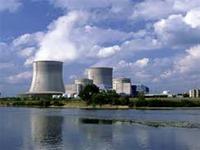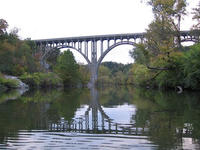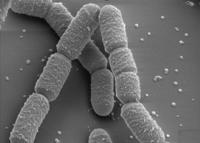-
Nuclear, coal-fired electrical plants vulnerable to climate change
Thermoelectric plants, which use nuclear or fossil fuels to heat water into steam that turns a turbine, supply more than 90 percent of U.S. electricity and account for 40 percent of the U.S. freshwater usage; in Europe, these plants supply three-quarters of the electricity and account for about half of the freshwater use; warmer water and reduced river flows in the United States and Europe in recent years have led to reduced production, or temporary shutdown, of several thermoelectric power plants; a new study says this problem will only grow
-
-
California coastal planners protect infrastructure from climate change
California’s coastal planners and resource managers say there is a need to prepare for changes along the coast that might result from rising sea levels and other impacts, such as more floods, loss of beach access, coastal erosion, and potential damage to transportation infrastructure, including highways, roads, and ports
-
-
Removing CO2 from the flues of coal-fired power plants
The current method of removing the greenhouse gas carbon dioxide (CO2) from the flues of coal-fired power plants uses so much energy that no one bothers to use it; scientists have developed an entirely new catalyst for separating out and capturing CO2, one that mimics a naturally occurring catalyst operating in our lungs
-
-
Explaining uneven rise in sea levels
If there is a global warming trend, one of its consequences would a rise in sea levels, which will require massive mitigation efforts to protect coastal infrastructure; rather than a uniform rise in sea level, however, the records show sea levels rising in some areas and dropping in others; Harvard researchers offer an explanation for this phenomenon
-
-
Groundbreaking tests to offer better understanding of post-earthquake fires
Post-earthquake fires are a well-known and serious hazard, but very little is known about the performance of fire protection systems in earthquakes; groundbreaking tests to be conducted next week are aimed at better understanding of the effects of earthquakes on building systems designed to suppress or prevent the spread of fires
-
-
McAfee, Intel collaborate on protecting energy infrastructure

McAfee and Intel will collaborate on improving the protection of the world’s energy utilities, including generation, transmission, and distribution, from increased cyber attacks; the two companies have provided a blueprint for a comprehensive solution of multiple products which create layers of security and operate together without great complexity or without impacting availability
-
-
Fears of cyber espionage hinder U.S. license to China Mobile
Serious concerns over cyberspying have fueled a debate among U.S. national security agencies about whether communications giant China Mobile should be granted a Federal Communications Commission (FCC) license to provide international service to American customers
-
-
Calibrating volume of U.S. petroleum flow
Per capita consumption of petroleum in the United States is ten liters per day; there are 300 million people in the United States, so this means that three billion liters, or about nineteen million barrels, of petroleum are moving around across the United States in pipelines, waterways, roads, and rails each day; with crude oil priced around $100 a barrel, this comes to about $2 billion worth of petroleum
-
-
Using nanomaterials to build safer, longer-lasting roadways
Asphalt is now made from petroleum, so it is very expensive; researchers tested two types of nanoclays, adding 2-4 percent by weight to asphalt; this is a smidgeon — less than half of a percent of the total weight of the asphalt pavement itself, but it made a big difference, and could make for safer, longer-lasting roadways
-
-
Protecting U.S. bridges from terrorism, accident
More than 600,000 bridges in the United States are 20-feet long or longer, some over a century old, many of them national iconic monuments; DHS, the Federal Highway Administration, and the U.S. Army Corps of Engineers are conducting a series of tests aiming to make the bridges better able to withstand a terrorist attack; this research is discovering how materials, connection details, and designs in aging bridges react to IEDs, other explosives, kinetic impact, intense fires, and other accidents
-
-
New tool offer better flooding protection
There are more than 84,000 dams across the United States, and millions of Americans live behind them; if these dams and levees were to fail and unleash catastrophic flooding, as some did in New Orleans in 2005, a high price will be paid in life lost and property destroyed; DHS S&T and partners develop new software systems for fast simulation of catastrophic flooding
-
-
Five arrested in foiled Cleveland bridge bomb plot

Five men who considered themselves anarchists and angry at the government and corporate America were arrested after a foiled attempt to blow up a Cleveland area bridge; the five were planning on commemorating May Day, the international workers’ holiday, by destroying the bridge connecting two wealthy Cleveland suburbs
-
-
Slowing time as a way to counter cyberattacks
Researchers offer a new way to deal with cyberattacks on critical infrastructure like power and water utilities and banking networks: slow down Internet traffic, including the malicious code, when an attack is suspected; this would allow networks time to deal with the attacks
-
-
Maintaining bridges and improving safety on a budget
What if there was a way to improve the safety, durability, and sustainability of aging bridges across North America without increasing spending? Researchers say they have found a way to do so
-
-
Humble bacteria help create self-healing concrete

Scientists use a ground-borne bacteria — bacilli megaterium — to create calcite, a crystalline form of natural calcium carbonate; this can then be used to block the concrete’s pores, keeping out water and other damaging substances to prolong the life of the concrete
-
- All
- Regional
- Water
- Biometrics
- Borders/Immig
- Business
- Cybersecurity
- Detection
- Disasters
- Government
- Infrastructure
- International
- Public health
- Public Safety
- Communication interoperabillity
- Emergency services
- Emergency medical services
- Fire
- First response
- IEDs
- Law Enforcement
- Law Enforcement Technology
- Military technology
- Nonlethal weapons
- Nuclear weapons
- Personal protection equipment
- Police
- Notification /alert systems
- Situational awareness
- Weapons systems
- Sci-Tech
- Sector Reports
- Surveillance
- Transportation
Advertising & Marketing: advertise@newswirepubs.com
Editorial: editor@newswirepubs.com
General: info@newswirepubs.com
2010-2011 © News Wire Publications, LLC News Wire Publications, LLC
220 Old Country Road | Suite 200 | Mineola | New York | 11501
Permissions and Policies
Editorial: editor@newswirepubs.com
General: info@newswirepubs.com
2010-2011 © News Wire Publications, LLC News Wire Publications, LLC
220 Old Country Road | Suite 200 | Mineola | New York | 11501
Permissions and Policies
